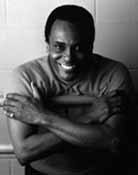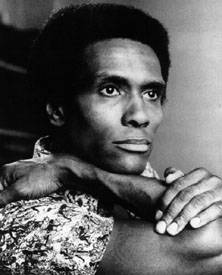

The myth was that because you were black that you could not do classical dance. I proved that to be wrong.” By destroying that myth, Arthur Mitchell has changed the way in which our country and the world look at an art form. In the process, he has also given a whole community and a couple of generations of young people immense pride and self-respect, while building the dance company described in The New York Times as “one of the dance world’s more visionary experiments”–Dance Theatre of Harlem.
A pivotal figure in the dance world for more than three decades and a self-described “political activist through dance,” Mitchell’s success was not guaranteed. He grew up in a Harlem neighborhood more conductive to being a gang member than a student. He credits education with saving him, and perhaps that is why Dance Theatre of Harlem has always been as much an institution that teaches as one that entertains.
A guidance counselor who saw Mitchell dance a jitterbug encouraged him to try out for the High School of Performing Arts in New York City, and he won a scholarship with his rendition of “Steppin’ Out with My Baby.” “When I won the scholarship,” says Mitchell, “I realized that I was in service to a force greater than myself, and that was my art form, dance.” He also encountered the racism inherent in the dance world, as lesser qualified white students were chosen over him for various projects. The sheer magnitude of his talent prevailed, though, and at 18 he was offered a scholarship to study ballet at the School of American Ballet, the training ground for the New York City Ballet. That’s when he decided “to do in dance what Jackie Robinson did in baseball.”
In 1955 he joined the New York City Ballet where he quickly rose to the position of premier danseur. During the 15 years with the company he electrified audiences with his performances in all of the major ballets of the repertory.
Never forgetting how the arts had turned his own life around, he helped create dance companies in Spoleto, Washington, D.C., and Brazil, but it was upon learning of the death of Martin Luther King, Jr., that Mitchell determined to do something to provide children in Harlem the kinds of opportunities which he felt had been given to him.
The Dance Theatre of Harlem was born in 1969 with 30 kids in a church basement in a community where resources of talent and creative energy were virtually untapped. Two months later, there were 400 youngsters attending classes. Eventually, Mitchell used his personal savings to convert a garage into the company’s first real home.
In Harlem, DTH created an explosion of professional opportunity in dance, music, and related theater activities. The school has an outstanding number of former students who, today, are successfully engaged in careers as dancers and musicians, as technicians in production, stagecraft, and wardrobe, and in instruction and arts administration.
And with this success, DTH challenged the dance world to review its stereotypes and revise its boundaries.
Over the years, Mitchell and his dancers have taken over the roles of cultural emissaries. In 1988, DTH was the first ballet company invited by the U.S. Information Agency to perform in the Soviet Union as part of the U.S./U.S.S.R. Royal Ballet of England in a series of historic collaborations that paired black and white dancers for the companies recently launched a new education project to find and train talented children of all races in England. “The Dance Theatre of Harlem, under Mr. Mitchell’s guidance, has helped dispel prejudice on an international level but has produced an all-black ballet company of stature and integrity” (The New York Times). The company, therefore, was a natural choice to become the first major performing arts troupe to visit South Africa as a statement of that country’s increasing racial openness.
Arthur Mitchell’s impact on this country’s cultural life is best illustrated, though, with a quote from a dance critic writing in Nebraska, America’s heartland, a place as far from Harlem as London or Moscow or Johannesburg: “If any dance company has the talent to turn a nondancer lover into a fanatic follower of the ballet, DTH would be the one.”
Source: The Kennedy Center online
